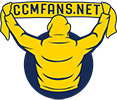The Jets had $21m in debt, $605 in the bank & a Hyundai in the carpark!
By DONNA PAGE
June 19, 2015, 11 p.m.
http://www.theherald.com.au/story/3159384/the-jets-had-21m-in-debt-605-in-the-bank/?cs=305
A SPIDER’S web of $18million worth of inter-company loans kept Nathan Tinkler’s Newcastle Jets afloat, until the club buckled in May under the weight of more than $21million debt.
A creditors’ report has revealed that when the company was placed in voluntary administration it had $605.46 cash in the bank, $88 in office petty cash, gym equipment, some outdated merchandise and a 2009 Hyundai i30.
Further investigation revealed the club owed $1.5million in wages and superannuation, $1.1million to suppliers and $2.7million to the tax office.
The club had long been a financial basket-case.
According to Newcastle Jets Football Operations director Donna Dennis, the company failed for a host of reasons including overpaid executives and the inability to attract sponsors. Ms Dennis, who is Mr Tinkler’s sister, said “unfavourable treatment” by Football Federation Australia, “inability to terminate underperforming players” and a “small member base” all contributed to the club’s demise.
She went further to blame “excessive ground hiring costs by Hunter Venues”, “no support from Northern NSW Football”, “no cash flow assistance from FFA”, “close proximity” to Central Coast Mariners and “limited corporate hospitality revenue”.
Northern NSW Football chief David Eland described the claims as a ‘‘joke’’.
‘‘Northern NSW Football absolutely refutes that assertion,’’ Mr Eland said.
According to the company’s administrator, James Shaw, the club had difficulty attracting major sponsors and relied heavily on sponsorship that came from other Tinkler-related companies.
In 2013, when the tax office attempted to wind up the Jets over unpaid debts, Mr Tinkler’s Hunter Ports stepped in and paid a $2.1million bill.
Financial records reveal that sponsorship for the A-League club almost halved from $2.2million in the 2012-13 financial year to $1.2million this year.
At the same time, match day sales plummeted from $720,000 to $366,000, merchandise sales dropped from $320,000 to $158,000 and corporate hospitality income slumped $140,000.
The club was underperforming and was plagued by falling crowd numbers.
When Jets players walked onto Hunter Stadium to face Perth Glory on April 6, they were met by a record-low crowd of 4192. Fans vented their frustration at coach Phil Stubbins and the club’s worst season on record by unveiling a giant banner at half-time that stretched across three bays of the Andrew Johns Stand.
“Enough failure lies and arrogance 10,000 fans demand the muppet gone,” it read.
The only income to increase at the trouble-prone club in the two years to June was FFA’s annual grant to pay player wages that went from $1.9million to $2.7million.
Insiders told the Herald a lack of cash flow spurred the end of the former mining magnate’s reign.
According to company records, executive expenses at the club increased more than 300 per cent from $131,000 in 2012-13 to $469,000 this financial year, while the amount spent on players dropped from $4.1million to $3.3million.
Despite cost-cutting efforts that saw administration expenses slashed and youth league spending cut, the financial losses continued to mountpressure on Mr Tinkler’s crumbling business empire, which was having its own cash-flow problems.
Internal company accounts reveal the Jets recorded a $4.4million loss in the year to June 2013, a further $2million loss the next year and $1.3million this financial year.





